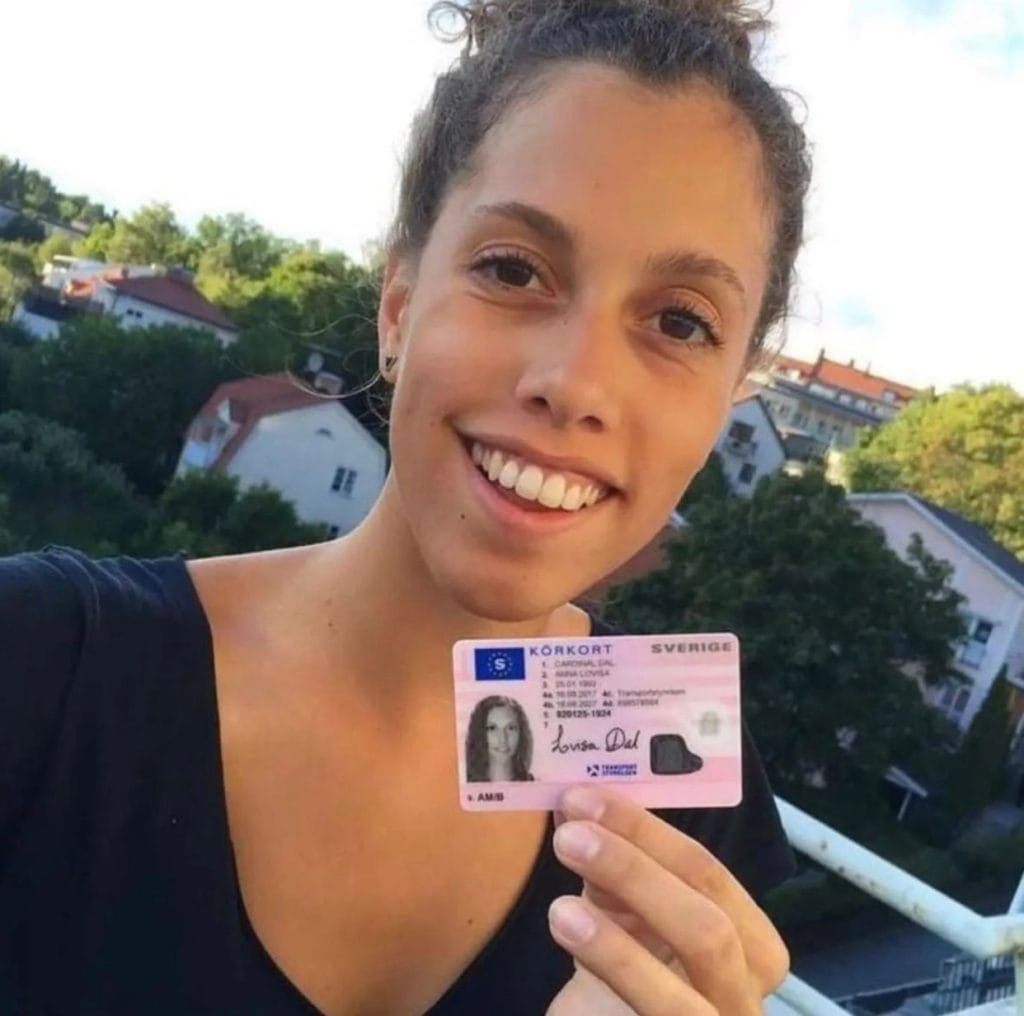
24
апреляWhat's Holding Back The Driver's License Without Taking A Driver's License Industry?

Navigating the World Without a Driver's License: Exploring Alternatives and Implications
In today's world, where movement is a cornerstone of life, the concept of living without a driver's license may appear challenging. However, for some people, the choice to pass up a driver's license is a mindful option driven by various factors, consisting of ecological issues, expense, and individual preference. This post explores the alternatives to driving and the ramifications of living without a driver's license, offering a comprehensive guide for those considering this lifestyle.

Comprehending the Decision
Choosing not to have a driver's license is a personal decision that can come from a number of factors. For some, it's a dedication to lowering their carbon footprint and promoting sustainable living. Others find the expense of owning and keeping an automobile prohibitive, while some just prefer the convenience and liberty of other modes of transportation. No matter the inspiration, living without a driver's license requires careful preparation and a desire to adjust.
Alternatives to Driving
Mass transit
- Buses and Trains: Public transport systems, such as buses and trains, are often the most reliable and cost-efficient alternatives. They are available in most city areas and offer a structured way to navigate cities and rural areas.
- Train and Light Rail: In larger cities, trains and light rail systems offer fast and Köpa A2 KöRkort effective travel, often bypassing rush hour and lowering travel time.
Ride-Sharing Services
- Uber and Lyft: These popular ride-sharing apps provide on-demand transportation, making it easy to get around without a car. They are particularly useful for late-night travel and in locations with limited mass transit.
- Carpooling: Joining or forming carpool groups can reduce expenses and ecological effect. Lots of neighborhood platforms and apps facilitate carpooling for regular commutes.
Bikes and E-Scooters
- Bikes: Cycling is a healthy and environment-friendly way to travel, specifically for much shorter ranges. Lots of cities have actually committed bike lanes and bike-sharing programs to encourage this mode of transport.
- Electric Scooters: E-scooters are a fashionable and practical choice for fast, brief journeys. They are often available through rental services in city areas and can be a fun alternative to standard modes of transport.
Strolling and Jogging
- Strolling: For those residing in walkable areas, walking is a basic and effective method to stay active and get around. It's totally free, requires no unique devices, and benefits the environment.
- Jogging: Similar to strolling, running can be a healthy and low-priced method to travel, specifically for brief ranges.
Electric and Hybrid Vehicles
- Electric Scooters and Bikes: For those who still desire the benefit of an individual car however are concerned about the environment, electrical scooters and bikes are a viable option. They are low-maintenance and produce fewer emissions.
- Hybrid Cars: If the choice to avoid a driver's license is primarily due to ecological concerns, however the requirement for a car is unavoidable, hybrid cars use a middle ground. They integrate standard gasoline engines with electric motors to reduce fuel usage and emissions.
Telecommuting and Remote Work
- Work from Home: Many business now use remote work options, allowing staff members to work from home or other places. This can significantly decrease the requirement for day-to-day commuting and the associated expenses.
- Virtual Meetings: Technology has made it possible to carry out business meetings and other interactions practically, more minimizing the need for travel.
Ramifications of Living Without a Driver's License
Financial Savings
- Lowered Vehicle Costs: Not having a car implies preventing expenditures such as car payments, insurance, upkeep, and fuel.
- Public Transport Costs: While public transport does have expenses, they are usually lower than those connected with owning a car.
Environmental Impact
- Lower Carbon Emissions: By avoiding the use of individual cars, individuals can substantially minimize their carbon footprint, adding to a more sustainable environment.
- Decreased Traffic Congestion: Fewer cars on the roadway can cause decreased traffic jam, making travel more efficient for everyone.
Health Benefits
- Increased Physical Activity: Using options like strolling, running, and cycling can enhance physical health and mental well-being.
- Minimized Stress: Avoiding the daily troubles of driving, such as traffic and parking, can lead to a more relaxed and stress-free way of life.
Social and Community Engagement
- Community Connections: Relying on mass transit or ride-sharing services can foster a sense of community and social interaction.
- Assistance for Local Businesses: Walking or cycling to local businesses can help support the regional economy and decrease reliance on large, environmentally unfriendly corporations.
Legal and Practical Considerations
- Recognition Issues: In lots of nations, a driver's license serves as a main form of identification. People without a license might require to bring alternative forms of ID, such as a passport or state-issued ID card.
- Travel Restrictions: Without a driver's license, travel to remote areas or locations with minimal public transport can be challenging. Planning ahead and utilizing alternative transportation techniques is crucial.
FAQs
Q: How can I get around if I reside in a rural location without a driver's license?
- A: In rural locations, choices like ride-sharing services, carpooling, and public transport may be limited. Consider signing up with neighborhood groups or Köpa C Körkort OnlineKöpa taxilicens Körkort Onlineköp Sverige körkort online; 112.126.100.134, platforms to discover local carpooling options. Electric scooters and bikes can also work for shorter distances. Furthermore, many backwoods have community transportation services that can be accessed for necessary journeys.
Q: Can I still travel worldwide without a driver's license?
- A: Absolutely. A driver's license is not required for most international travel. Nevertheless, you might need a passport or other kinds of identification. For countries where driving is required, you can lease a car with a valid driver's license or usage local transportation services.
Q: What are the very best apps for discovering ride-sharing and carpooling options?
- A: Popular apps for ride-sharing include Uber, Lyft, and Bolt. For carpooling, Waze Carpool, Ridester, and Scoop are highly advised. These apps typically supply real-time information on offered rides and assist link you with drivers heading in the very same instructions.
Q: How do I handle without a driver's license if it is needed for numerous forms of identification?
- A: In lots of locations, a state-issued ID card or a passport can work as a primary kind of recognition. It's also a great concept to bring several kinds of ID, such as a credit card or a citizen registration card, to ensure you are prepared for various scenarios.
Q: Are there any health dangers related to utilizing public transport?
- A: While public transport can expose people to a higher danger of contagious illness, especially in congested conditions, the benefits frequently surpass the dangers. Practicing excellent hygiene, such as washing hands frequently and wearing a mask, can assist reduce these risks. In addition, many mass transit systems have actually carried out security steps to safeguard travelers.
Q: What are the environmental benefits of not driving a car?
- A: Not driving a car can substantially reduce your carbon footprint. Vehicles are a major source of greenhouse gas emissions, and by choosing for mass transit, cycling, or strolling, you can contribute to a healthier environment. This also helps minimize air pollution and traffic jam, enhancing total quality of life.
Living without a driver's license is a possible and often helpful choice for numerous individuals. By checking out and utilizing alternative modes of transportation, one can save cash, reduce their environmental impact, and improve their health and well-being. While there are obstacles, such as navigating recognition and travel issues, the benefits often make the effort rewarding. Whether driven by individual values or useful factors to consider, the choice to forgo a driver's license can lead to a more sustainable and fulfilling way of life.
Additional Resources
- Public Transport Apps: Transit, Moovit, Citymapper
- Biking and Walking Apps: Strava, MapMyRide, Google Maps
- Neighborhood Carpooling Platforms: Waze Carpool, Ridester, Scoop
- Remote Work and Telecommuting Tools: Zoom, Microsoft Teams, Slack
By welcoming these alternatives, individuals can produce a way of life that aligns with their worths and needs, adding to a more sustainable and connected world.
Отзывы